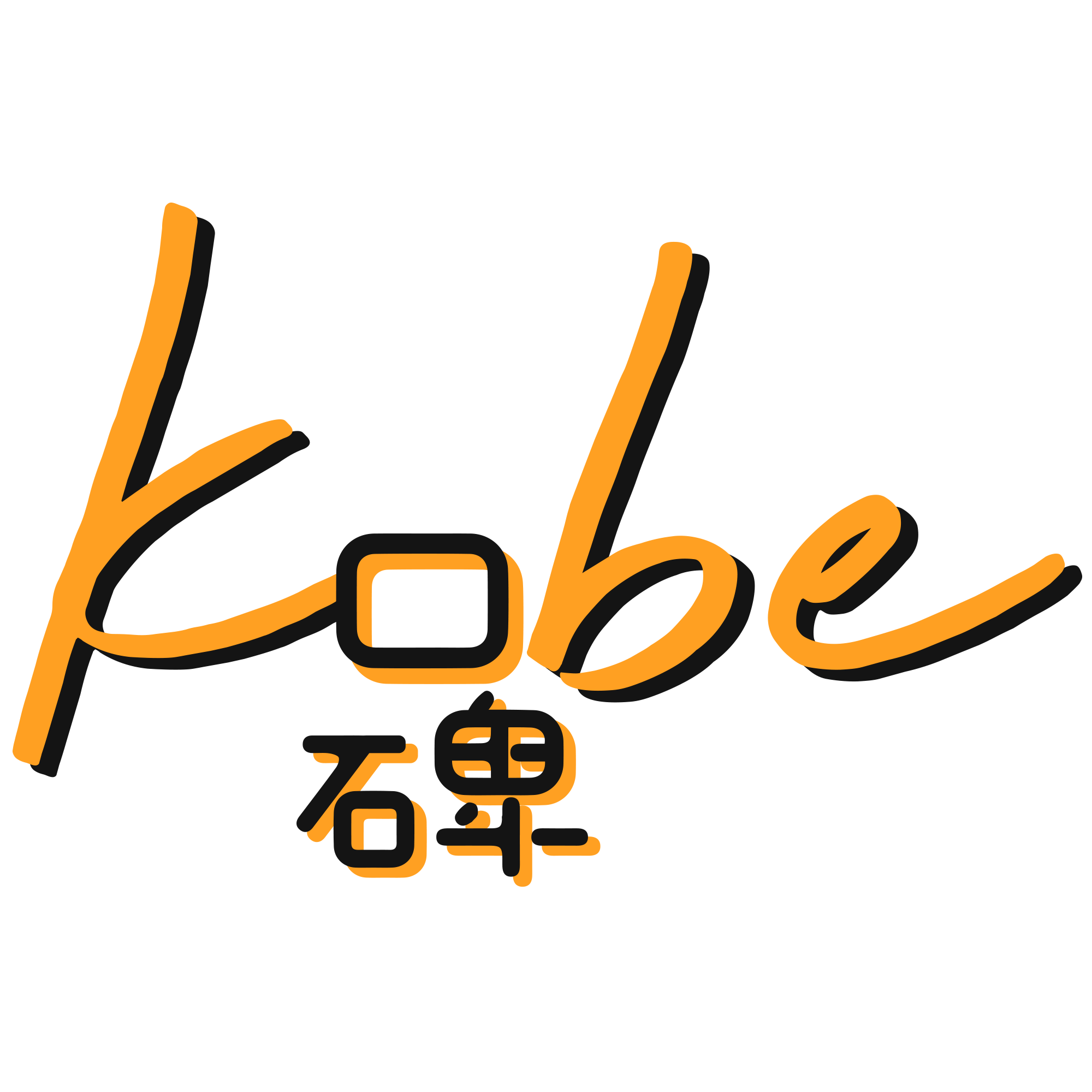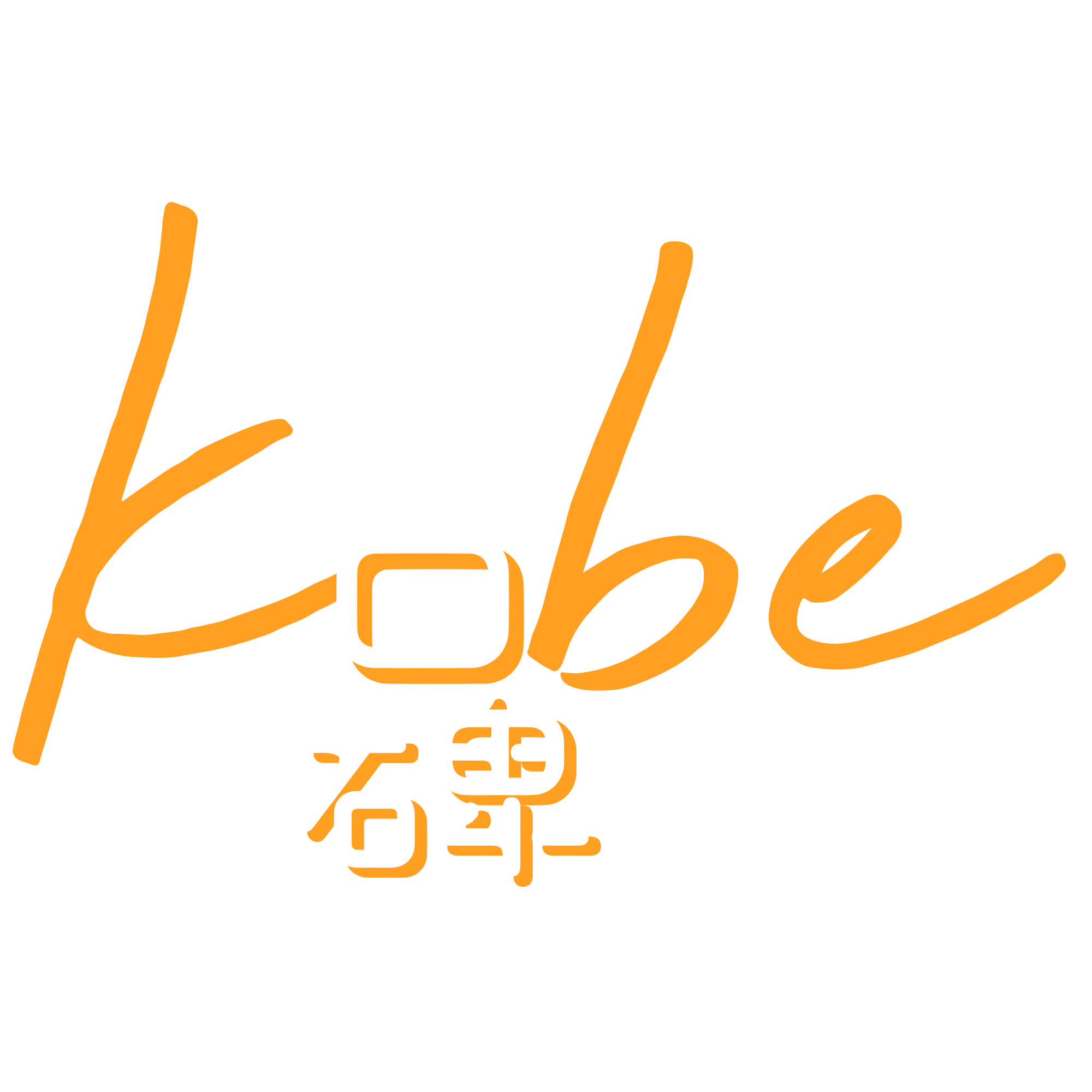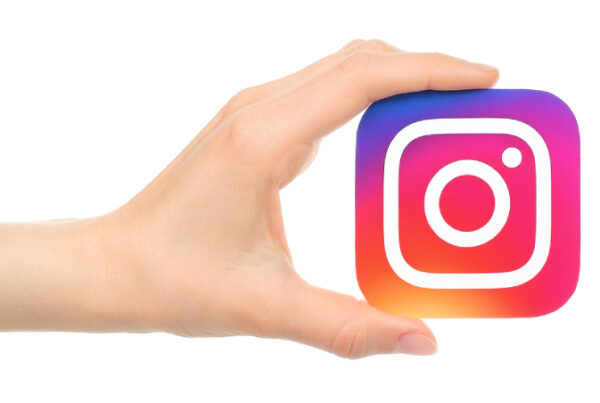Which category of Social Media Influencers do you belong to?
As a brand, finding the right influencers is key to an effective marketing strategy on social media. Today, businesses are turning to their favorite Instagram models or YouTube stars not only for effective marketing strategies but also for purchasing decisions.
Social media influencers are trusted by millions of followers online and as such, they have the power to influence buying decisions. Recent statistics show that 86% of women use social media for purchasing advice.
These decisions are made based on influencers posts on Instagram and Facebook. Therefore, as a brand, if you want to reach more users and convince them to buy your products, you need the help of an influencer.
To ensure the success of your marketing campaign, you must partner with the right influencer.
Here are the major types of influencers every business should know.
Macro influencer
This is someone who has an audience of more than 20,000 followers on his/her social media channel. As a household name, a macro influencer provides high-quality content normally focused on a passionate topic like travel or fitness.
Macro influencers are relatable and approachable too. Besides that, they have a large following base and high-quality branded content. The reason for this is that they take their social image seriously.
A good example of a macro influencer is Daniel Fox (@magic_fox), a German lifestyle influencer who shares content on travel, fashion, and fitness. He has 1.8 million followers, has an engagement rate of 1.37% and earns $3,693 to $6,155 per post.
An example of a Macro influencer in Singapore would be Bong Qiu Qiu, who has a total following of close to 300k. Her posts are mainly made up of content from the food, fashion and lifestyle category. Macro influencers like Bong Qiu Qiu are great for brand awareness due to their large follower base.
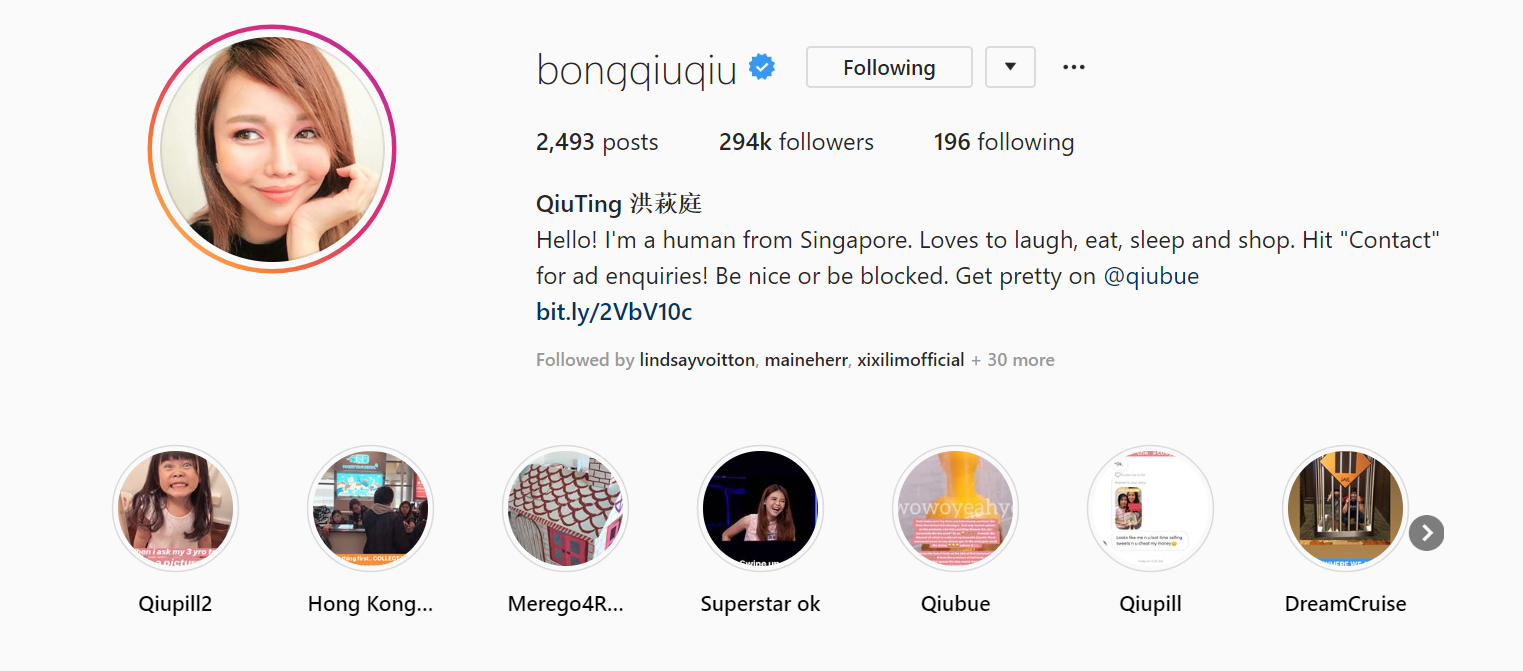
Brands often approach macro influencers to promote their products and company. By choosing a macro influencer to market your product, brands have greater awareness and visibility since macro influencers have a larger social media following.
Key advantages of macro influencers include:
- Firstly, they tend to have a high level of professionalism
- Secondly, a wide audience equals to more reach, meaning that your intended message is seen by a larger group of people
- Thirdly, they tend to have a lower risk of boosted engagement
- Lastly, brands tend to have more control over the campaigns
Although macro influencers have the numbers, they have medium to low customer engagement.
Micro influencer
Unlike a macro influencer, a micro influencer is someone who has 5,000 to 20,000 followers on Instagram, Twitter or Facebook. Regarded as an industry expert, they tend to focus on a specific niche. Therefore, they are able to create stronger relationships with their followers. Besides, they have a uniform audience, due to their niche content (an influencer focused on fashion would have a following made of largely fashion lovers). This is unlike celebrity influencers, who tend to be followed by a wide range of users.
Micro influencers are perceived as trustworthy and genuine – key points that are pretty useful when it comes to creating a successful marketing campaign. They are also relatable which is why followers are more likely to buy products based on their recommendation.
An influencer that can be grouped under the category of ‘micro influencers Singapore’ will include Lim Yao Peng, with a following of 7000 followers. Like other micro influencers this ex-national sprinter has an Instagram feed largely focused on one niche subject. In his case, fitness, running in particular. Due to his profile as a competitive sportsman, a certain level of credibility is established when he produces content related to fitness on social media. As mentioned in the above, micro influencer’s knowledge in particular expertise often propel them to higher levels of credibility, making them a great target group for influencer marketing.
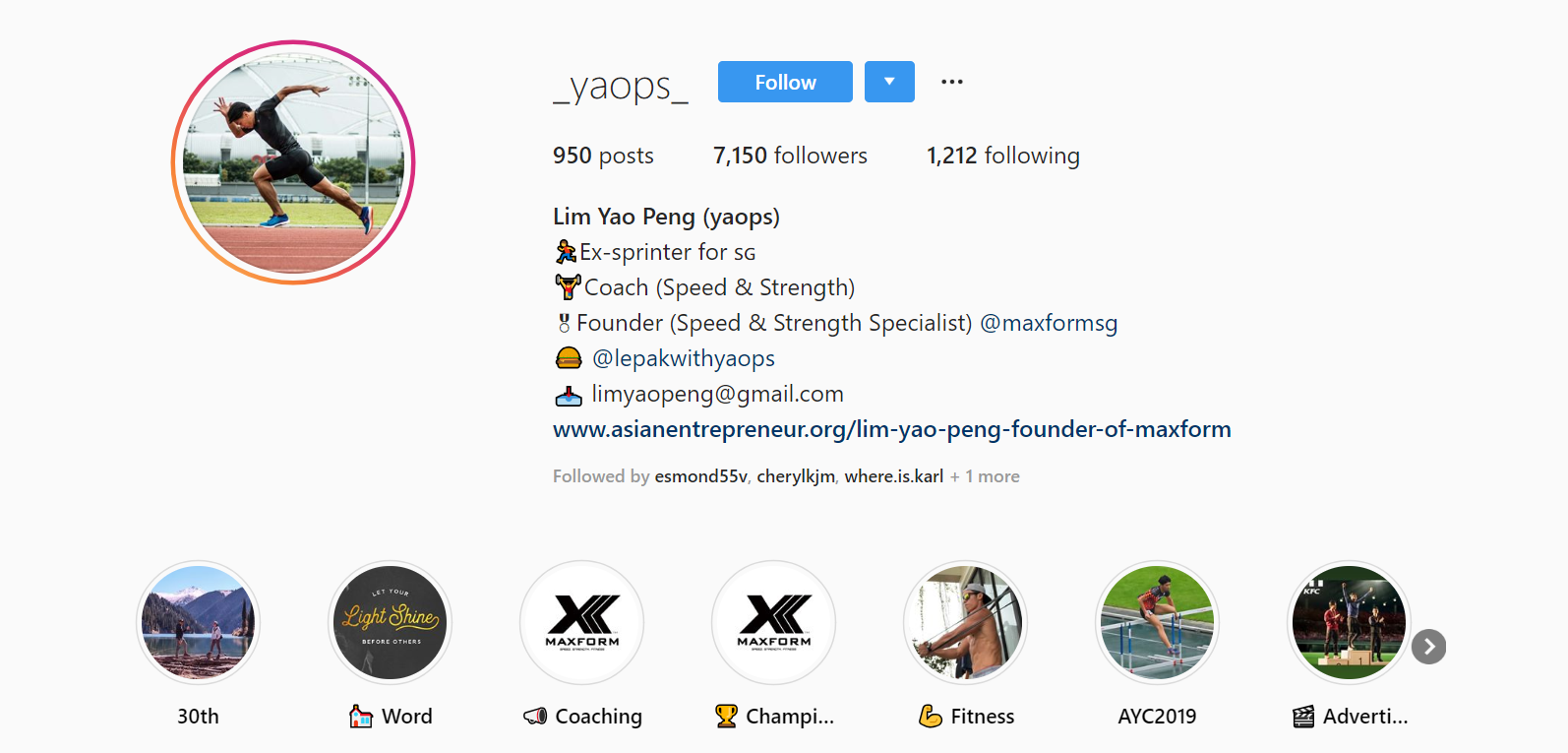
https://www.instagram.com/_yaops_/
Finding a macro influencer on social media is very easy. All you have to do is search online and voila! You have your influencer. However, with micro influencers, you need specific tools such as social media monitoring tools.
To find what you are looking for, you need the following:
- Hashtags related to your business
- Product or service name
- Brand name
- Keywords
Key benefits of working with micro influencers include:
- Firstly, it helps you to reach your intended audience. This is because micro influencers tend to have a uniform following (food influencers have food enthusiasts following them), allowing companies to target influencers who have a niche in the product they are marketing
- Secondly, which is related to the first point, a more targeted audience would most probably result in higher sales
- Thirdly, brands enjoy the option of choosing to work with one or multiple micro influencers
- Fourthly, micro influencers tend to charge less for their postings.
- Lastly, small and medium-sized enterprises have the financial capabilities to hire micro influencers
Nano influencers
Like micro influencers, this is a new category of influencers with small, and niche-based audience. Nano influencers have a following of 500 to 5000 followers and are considered the future of influencer marketing. As such, they are able to change how marketers and brands interact with their target audience on social media.
A good example of a nano influencer campaign is how Remington, hair care brand, promoted its curling wand. Leticia Collins, a nano influencer, created content that featured her using the curling wand from Remington. She took a photo of herself with the product and tagged the brand’s handle. She also included a brand hashtag and FTC disclosure (#Sponsored).
In the local context, influencers that can be grouped under ‘Nano influencers Singapore’ include Calvin Teng, with a feed that is largely focused on food photography. With a following of over 3000, and a strategic posting direction of food photography, Calvin followers are likely to be made of users passionate about food. Therefore, this makes him an ideal nano influencer for the F&B industry to work with.
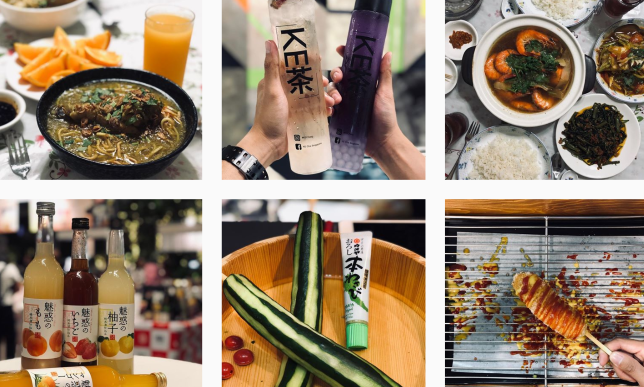
https://www.instagram.com/ilostmyfarts/
So, how can you spot a nano influencer on social media? There are several tell-tale signs and they include:
- A summary of specialties and interests in the influencer’s bio
- Beautiful photos on the influencer’s social media feed (Should be of high quality with aesthetic consistency)
- Highlight reels showcasing past collaborations
- Contact information (DM or email)
Key benefits of collaborating with nano influencers
- Firstly, they are relatable and approachable
- Secondly, they are authentic
- Thirdly, they enjoy high engagement rates (percentage of followers showing interest in their postings by liking or commenting is higher) because they know many followers personally
- Fourthly, they provide a solid return on investment
Celebrity influencers
If you have used macro and mega influencers before, then switching gears and collaborating with a celebrity influencer is not difficult. A celebrity influencer is a famous individual with over 10 million followers on Instagram, Facebook, and Twitter.
One good example of a celebrity influencer is Kylie Jenner. With over 5,800 posts and 130 million followers on Instagram, Kylie Jenner has an engagement rate of 4.01%. Estimated cost per engagement is between $0.04 to $0.07. Her estimated earned media value per USD is x10.0.
A good example of a campaign where a brand collaborated with a celebrity influencer is Lagavulin’s and Nick Offerman (Ron Swanson from Parks and Recreation). Lagavulin created a 44-minute long video “Yule Log” where Nick Offerman sat by the fire sipping a glass of whiskey. As such, Lagavulin tapped into a specific niche audience. That is viewers and fans of Park and Recreation.
A local example of a celebrity influencer would include Cynthia Koh. Her Instagram account has a total following of 67K followers with likes as high as 2000. She has used her online influence to team up with popular brand names like Fragrance (famous for their bakhwa) for an influencer marketing campaign.

https://www.instagram.com/cynthiakoh27/
Celebrity influencers such as Kylie Jenner normally earn $258,000 to $500,000 per post due to their extensive following on social media. Thanks to their wide reach, any brand collaborating with her can expect an increase in sales and revenue. However, celebrity influencers tend to have relatively lower engagement levels. This means, trying to make a real connection between your target audience and your brand is hard.
Key benefits of celebrity influencers:
- Firstly, an access to a huge audience, often the largest out of the different categories of influencers
- Secondly, a high level of professionalism
- Thirdly, low risk of boosted engagement
- Fourthly, Brands tend to have more control over the campaigns
The downside of celebrity influencers is that they are not compatible with small or medium-sized business. Why? This is because small and medium-sized businesses don’t have the financial muscle that large brands have.
Selecting The Right Influencer – The Secret Formula
It’s no secret that collaborating with the right influencer will not only popularize your brand but increase sales and attract more customers to your business. Problem is finding the right influencer is not easy. What you need to know is that we have the secret formula.
First and foremost, businesses need to align their interests with the influencer or group of influencers. Doing so makes it easy to find influences that fit with your campaign and target audience.
Secondly, mix and match the influencers. Instead of collaborating with a macro, micro or nano influencer only, work with influencers across all categories. Selecting influencers from the right channels and using a wide range of influencers can help you reach your target audience with your message. Remember, it’s not about the fans an influencer has but their ability to sway the consumers’ opinion.
Final Thoughts
As a business, the choice of an influencer solely depends on your target audience, the product, message you want to send across and your budget. Also, it depends on the purpose of your marketing campaign.
All you have to do is collaborate with the right influencer.
Good luck!
Types of Influencer General FAQ
Q: What are the different influencer tiers and categories?
A: Under the pyramid of influence, the influencer tiers are separated into Celebrity Influencer, Macro Influencer, Micro Influencer, and Nano Influencer. There are different categories such as beauty, fashion, lifestyle, parents, and foodie.
Q: What is Celebrity Influencer?
A: A Celebrity Influencer is a famous individual with who gains their influence through traditional channels such as television, radio, magazines, etc.
Q: What is a Macro Influencer?
A: A Macro Influencer is an online personality who provides high-quality content normally focused on a passionate topic like travel or fitness.
Q: What is Micro Influencer?
A: Micro-influencer is an individual who focuses on a specific niche or area and is generally regarded as an industry expert or topic specialist.
Q: What is Nano Influencer?
A: Nano Influencer is an individual with a smaller number of followers but has influence in the local neighborhood or community.
References
https://www.socialmediatoday.com/news/micro-influencers-vs-macro-influencers/516896/
https://blog.scrunch.com/what-is-a-macro-influencer
https://www.cmswire.com/digital-marketing/social-media-influencers-mega-macro-micro-or-nano/
https://blog.hubspot.com/marketing/micro-macro-influencers-effective
https://www.theguardian.com/commentisfree/2018/nov/14/rise-nano-influencer-brands-celebrities-youtube-instagram
https://medium.com/@mavin.network/why-nano-influencers-are-the-future-of-influence-marketing-369cada5cb9f
https://medium.com/swlh/how-to-identify-the-best-social-media-influencers-for-your-brand-cb222a92ceb0
